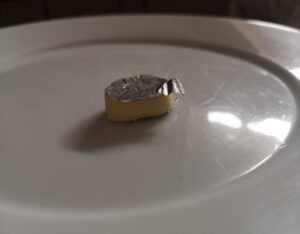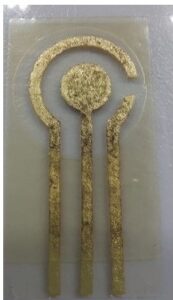| Full project title: | Twinning for reaching sustainable scientific and technological excellence in the field of Green Electronics |
|---|---|
| Acronym: | GREENELIT |
| Grant No: | 951747 |
| Type of action: | H2020-WIDESPREAD-05-2020 - Twinning |
| Total budget: | € 898 800 |
| Start date: | 01/11/2020 |
| End date: | 31/10/2023 |
| Project web site: | www.greenelitproject.com |
| Cordis site link: | https://cordis.europa.eu/project/id/951747 |
The GREENELIT project is aimed at creating the collaborative conditions required for the promising research institution – University of Novi Sad (UNS), Serbia to trace clear excellence trajectory in the field of Green Electronics. This will be achieved by twinning with EU research intensive institutions with strong expertise in this field – the Italian Institute of Technology (IIT), Italy and the Denmark Technical University (DTU), Denmark.
Implementing measures for knowledge transfer, exchange of the best practices and widening international collaboration, UNS will reach scientific, technological and innovation excellence in the emerging and ground-breaking field of Green Electronics and will direct its scientific strategy towards the EU standards of the peak of excellence.
This project will open a new research avenue, and will develop new techniques for the development of Food-based electronic components and circuits, with the potential to revolutionize an emerging domain of biomedical technologies and devices.
The improving scientific excellence and innovation capacity of UNS is focused on combination of FOOD INDUSTRY and FLEXIBLE ELECTRONICS in order to reach peak of excellence in the FOOD-BASED (EDIBLE) ELECTRONICS and to create sustainable eco-friendly innovative solutions for applications in biomedicine.
Up to now, the team from the University of Novi Sad has focused research directions in the sub-domains of fabrication and testing the passive components such as resistors (R), inductors (L), capacitors (C) as well as on sensors (LC sensors and bite force sensors). Some of the developed structures are depicted in Figure 1 and Figure 2.
 |
 |
 |
 |
| Figure 1. Edible electronic components developed at the University of Novi Sad |
 |
 |
| Figure 2. Edible sensors developed by UNS team |
In the next period, in cooperation with colleagues from IIT and DTU, UNS team will start research in the field of organic transistors so that the complete process of design, fabrication and testing would be done in the laboratories of the UNS. The vision of the priority areas of research in the next period of UNS team are as follows.
- Creation of electronic components from gelatine
- Characterization of flexible materials based on silk and MXenes
- Use green OFETs for the development of specific sensors: gas sensors and biosensors
- Determination of electrical, structural and mechanical properties of new solid and ions-based edible conductive materials
- Development of xantham gum and isomalt-based structures for administration of the medications in the oral cavity
Protein-Based Films: Adhesion and Thermal Stability Assessment
 The UNS team developed protein- based films, which have enough thermal stability and adhesion to be used as a substrate for edible printed electronics. Protein films are known for their gentle adhesion, which is a significant technical advantage, as they form robust interlinked bonds. This simplifies the manufacturing process and enhances thermal and chemical stability, crucial for functionality in various environments. This self-adhesive feature adds substantial value to this technology. Edible gold leaves were attached to the film without any adhesive and a three-electrode system was formed, as can be seen in the picture (left).Thermal stability was tested at 50°C, 70°C, and 100°C, which are significant for production of electronic components. Variations in film thickness have been done as well. Significant thermal stability was
The UNS team developed protein- based films, which have enough thermal stability and adhesion to be used as a substrate for edible printed electronics. Protein films are known for their gentle adhesion, which is a significant technical advantage, as they form robust interlinked bonds. This simplifies the manufacturing process and enhances thermal and chemical stability, crucial for functionality in various environments. This self-adhesive feature adds substantial value to this technology. Edible gold leaves were attached to the film without any adhesive and a three-electrode system was formed, as can be seen in the picture (left).Thermal stability was tested at 50°C, 70°C, and 100°C, which are significant for production of electronic components. Variations in film thickness have been done as well. Significant thermal stability was
